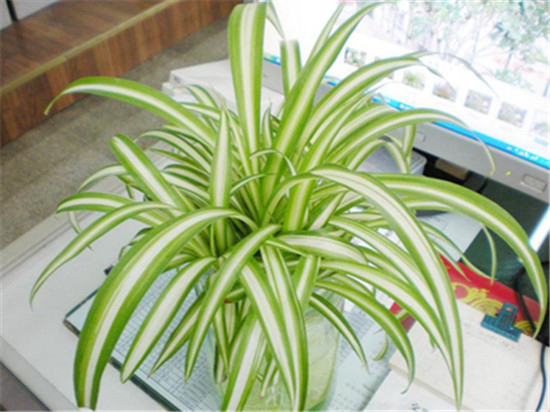The Culture method of Cymbidium introduction to the Culture of Cymbidium
Friends who have planted Cymbidium all know that Cymbidium can be propagated by cutting, ramet, sowing and other methods. Next, let's learn more about it.

Cuttings and ramet propagation can be carried out at any time from spring to autumn. Cymbidium has strong adaptability and high survival rate, so it is generally easy to reproduce. When planting, as long as the stolon with new buds of 510 cm is inserted into the soil, it can take root in about a week, and it can be transplanted into a pot in about 20 days and watered thoroughly and maintained in a cool place.
Cymbidium is a perennial evergreen perennial herbaceous flower with various forms, strong shade tolerance and easy management. It is often used to hang potted plants for indoor decoration or garden setting. The following points should be mastered in its culture:
1. Temperature control: Cymbidium prefers warm and humid climate, is not cold-resistant, grows fastest at 20-24 ℃, stops growing above 30 ℃, and leaves are easy to turn yellow and dry tip.
2. Light regulation: outdoor cultivation in summer should pay attention to shade, so as not to make the light too strong, otherwise sunburn is easy to occur.
3. Regulation of water and fertilizer: in the spring and autumn growth season, watering should be adequate, basin soil should always be moist, and branches and leaves should be sprayed with water close to room temperature to prevent dry tip, but not stagnant water.

4. Pruning and changing pots: as the plant grows, the old leaves at the base should be cut frequently in order to maintain a good plant shape.
5. Pest control: the dense plant clusters of Cymbidium are poorly ventilated and are vulnerable to scale insects, so prevention should be given priority to.
Matters needing attention in Cymbidium Culture
The main results are as follows: 1. Cymbidium is a kind of fertilizer-tolerant plant with yellowing leaves due to lack of nutrients and easy to scorch head senescence.
2. Semi-overcast is better in spring and autumn, light should be seen in the morning and evening in summer, shade at noon, avoid sun exposure, sunshine is more common in winter, basin soil is moist during the growing period, and water can not be accumulated.
3. Change the basin once a year in spring (mid-late March).

4. Avoid direct sunlight in summer. Always keep the basin soil moist. Irrigate liquid fertilizer every 15-20 days.
After mid-October, hang the flowerpot indoors close to the sunny surface and easy to watch. In winter, the surface of the basin soil should be watered after being dry at a depth of about 1 meter.
6. when the climate is dry in summer and autumn, measures such as spraying water should be taken to increase the air humidity around the plant.
7. The basin soil should be kept dry in winter. Too wet basin soil will induce Botrytis cinerea and rotten leaves.
8. Indoor lighting should not be too dark, otherwise the leaf color will become light or yellowish green.

9. Watering should avoid pouring into the plant heart, otherwise it is easy to cause tender leaves to rot.
10. Fertilizing too much exceeds the requirement of the plant. At the beginning, the leaves are shiny and uneven, after the roots rot, the leaves will be yellow. Should stop fertilizing, irrigate more water, or turn the pot to clean the root and replace the new soil.
The above is my summary of the breeding methods of hanging orchids, the whole content of the introduction of the breeding of hanging orchids. I hope this article can help you. Please continue to follow us.
Related
- Wuhan Hospital Iron Tree Blooming Result Was Instantly Frightened by the Gardener Master
- Which variety of camellia is the most fragrant and best? Which one do you like best?
- What is the small blue coat, the breeding methods and matters needing attention of the succulent plant
- Dormancy time and maintenance management of succulent plants during dormancy
- Minas succulent how to raise, Minas succulent plant pictures
- What are the varieties of winter succulent plants
- How to raise succulent plants in twelve rolls? let's take a look at some experience of breeding twelve rolls.
- Attention should be paid to water control for succulent plants during dormant period (winter and summer)
- Watering experience of twelve rolls of succulent plants
- Techniques for fertilizing succulent plants. An article will let you know how to fertilize succulent plants.



